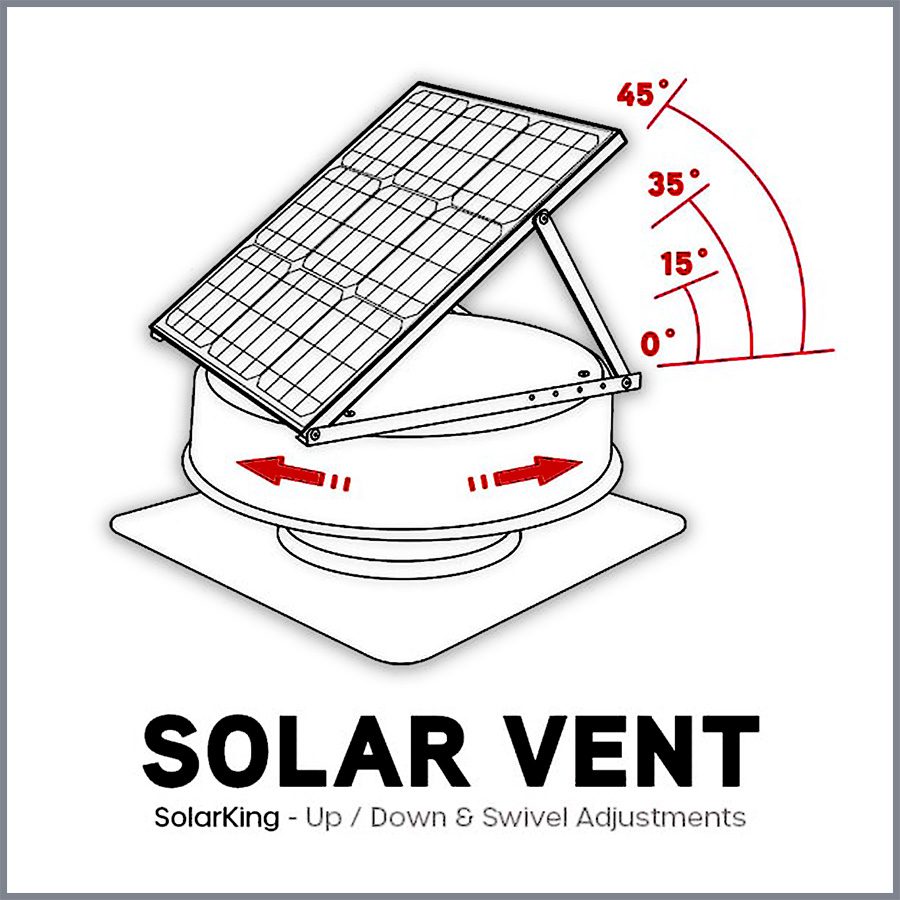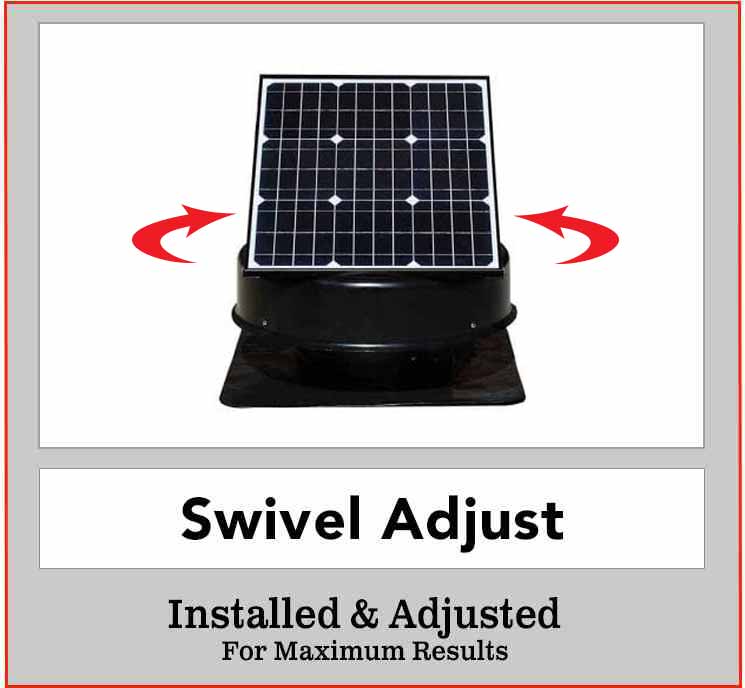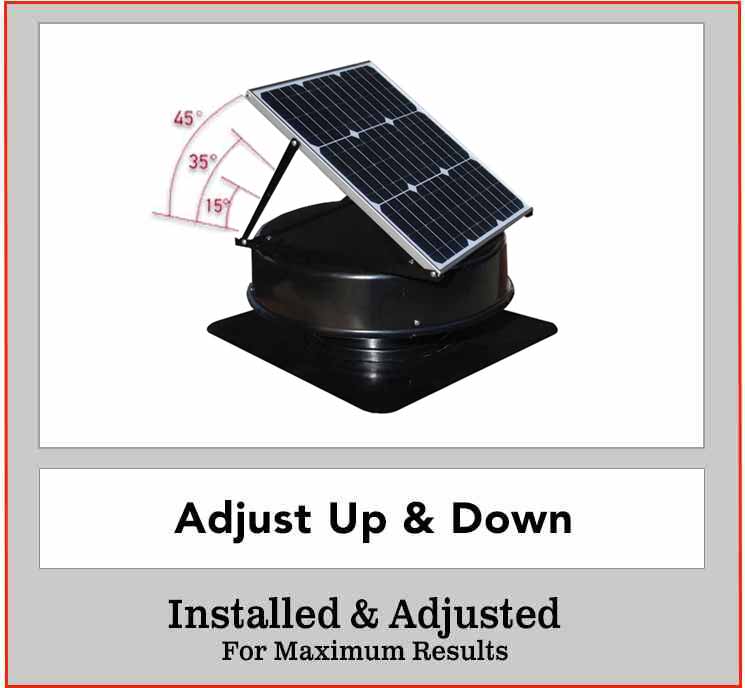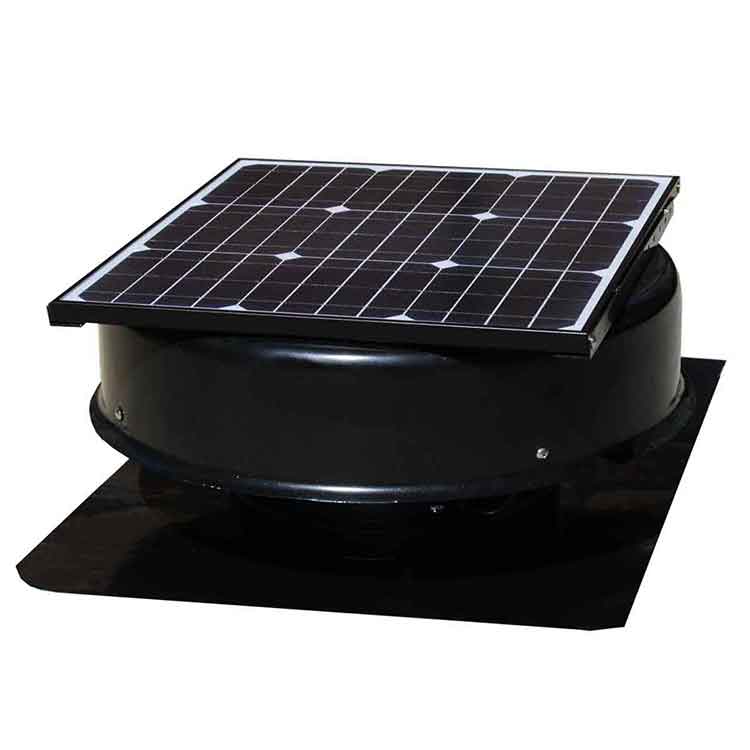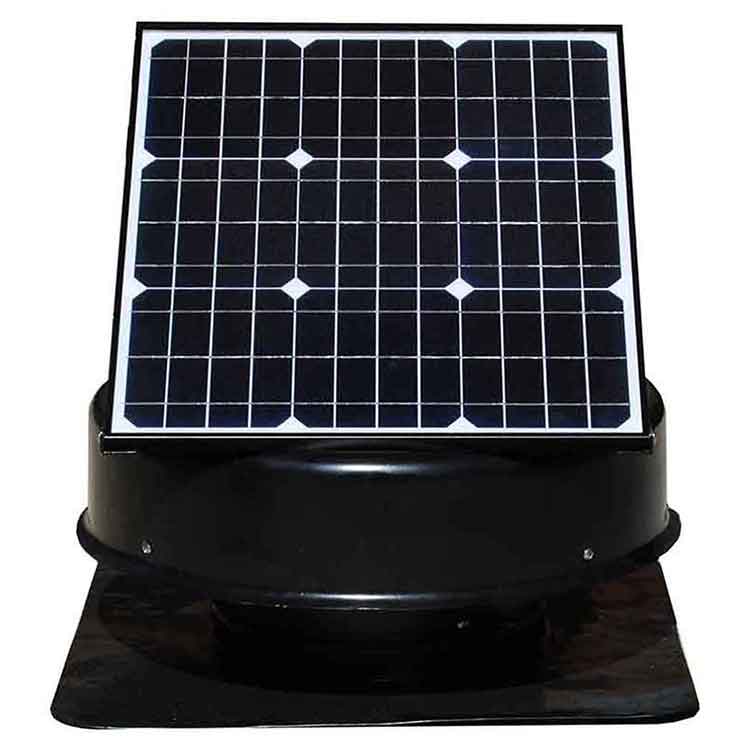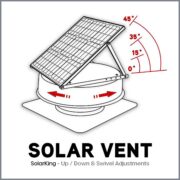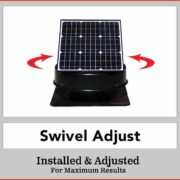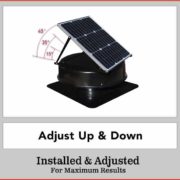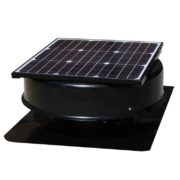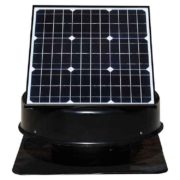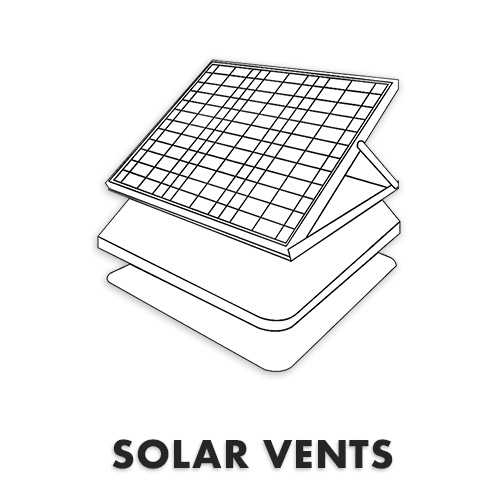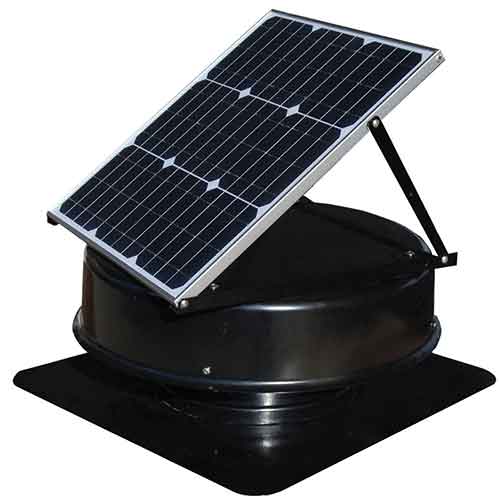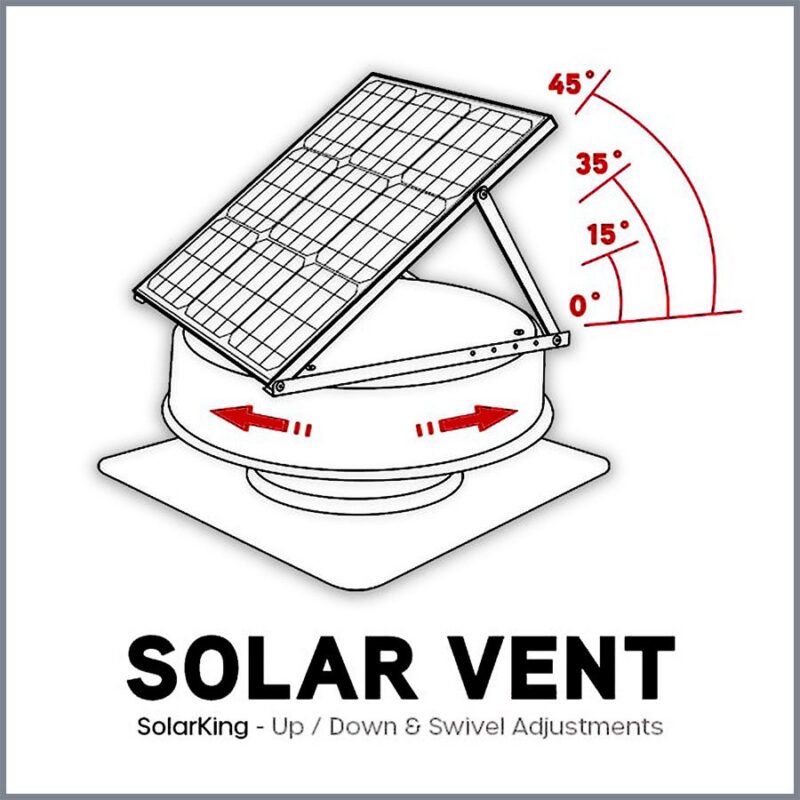SolarKing 35w Vent + Free Shipping
$475.00 & Free Shipping
Having issues ordering? Use our order form Instead.
Adjustable Solar Ventilator
- Capacity: 2100 CBM Per Hour
- Motor: 35 Watts, 6-19VDC, 1600rpm Max
- Motor2: Brushless Motor / Double Shielded Ball Bearings
- Solar Panel: Mono-Crystalline PV, Heavy Duty Frame, 3mm Tempered Glass
- Solar Panel Output: 35 Watts, 18VDC
- Fan: 300mm Balanced 5 Blade with Low Resistance
- Automatic Shut Off <45℃ +/- 5℃
- Product Base Dimensions: 565 x 565 x 1mm
- Product Weight: 7.8 Kgs
- Construction: Alum.. Top Cover, Alum.. Body, Steel Brackets & Stainless Steel Fasteners,
- Colour: Black Powder Coated
- Packaging Dimensions: 580 x 570 x 282mm
- Packing Weight: 9.6 Kgs
- Warranty: 2 Years (10 Years on Solar Panel)
Description
**Understanding Roof Ventilation Options for Australian Homes**
When it comes to maintaining a comfortable and energy-efficient home in Australia, proper roof ventilation is crucial. Among the various options available, two popular choices are solar roof vents and whirlybirds. In this article, we’ll delve into the nuances of these options and answer some common questions related to them.
**1. What is the difference between solar roof vent and whirlybird?**
Solar roof vents, as the name suggests, are powered by solar energy and are designed to expel hot air from your roof space. On the other hand, whirlybirds, also known as turbine vents, operate based on wind power. They spin with the wind, drawing hot air out of the roof cavity.
**2. How much is a solar roof vent?**
The cost of a solar roof vent can vary depending on factors such as brand, size, and installation requirements. Generally, prices range from a couple of hundred to a five or six hundred dollars per unit depending on its capacity and use.
**3. Are solar powered roof vents worth it?**
Yes, solar roof vents can be a worthwhile investment. They help to reduce heat buildup in your roof space, which can improve the overall comfort of your home and potentially lower cooling costs during hot Australian summers.
**4. Do solar roof vents work at night?**
No, solar roof vents do not operate at night since they rely on sunlight to power their fans. However, during the day, they can be highly effective in ventilating your roof space.
**5. How long do solar roof vents last?**
Solar roof vents typically have a lifespan of around 10 to 15 years, although this can vary depending on factors such as usage and environmental conditions.
**6. Are solar roof vents noisy?**
Generally, solar roof vents operate quietly, especially compared to some traditional mechanical vents. However, noise levels can vary depending on the specific model and installation.
**7. How much does it cost to install a solar whirlybird?**
The cost of installing a solar-powered whirlybird can range from a few hundred to over a thousand dollars, depending on factors such as size, brand, and installation complexity.
**8. Are whirlybirds worth it?**
Whirlybirds can be a cost-effective option for roof ventilation, especially in areas with consistent wind patterns. However, their effectiveness may be limited in regions with minimal wind.
**9. What is the most efficient roof vent?**
The efficiency of a roof vent depends on various factors, including design, size, and environmental conditions. Both solar roof vents and whirlybirds can be efficient options when properly installed and suited to the specific needs of your home.
**10. Do solar roof exhaust fans work?**
Yes, solar roof exhaust fans can effectively ventilate your roof space by expelling hot air and moisture. They operate similarly to solar roof vents but may have a different design or configuration.
**11. What is the alternative to the whirlybird vent?**
Solar roof vents, ridge vents, and powered attic fans are among the alternatives to traditional whirlybird vents.
**12. Can you have too many vents on your roof?**
While proper ventilation is essential, having too many vents can disrupt airflow patterns and reduce efficiency. It’s important to consult with a professional to determine the optimal number and placement of vents for your home.
**13. How do you install solar roof vents?**
Installation procedures can vary depending on the specific vent and roof type. It’s recommended to hire a qualified professional to ensure proper installation and optimal performance.
**14. Can there be too many roof vents?**
Yes, having too many roof vents can lead to inefficient airflow and potentially cause issues such as leaks or structural damage.
**15. Do you need roof vents on both sides of the roof?**
Ideally, roof vents should be strategically placed to facilitate cross-ventilation and ensure proper airflow throughout the roof space. This may involve having vents on both sides of the roof, but the exact configuration will depend on factors such as roof design and size.
**16. How do I know if my roof has enough ventilation?**
Signs of inadequate ventilation include excessive heat buildup in the attic, moisture issues, and higher energy bills. A professional inspection can help determine if your roof requires additional ventilation.
**17. What are the disadvantages of roof vents?**
Potential disadvantages of roof vents include installation costs, maintenance requirements, and the risk of leaks or damage if not installed correctly.
**18. Can you install roof vents yourself?**
While some homeowners may have the skills to install roof vents themselves, it’s generally recommended to hire a professional to ensure proper installation and avoid potential issues.
**19. How much does it cost to install a solar attic fan?**
The cost of installing a solar attic fan can vary depending on factors such as size, brand, and installation complexity. Prices typically range from a few hundred to over a thousand dollars.
**20. Where should roof vents be installed?**
Roof vents should be strategically placed to facilitate optimal airflow throughout the roof space. Placement will depend on factors such as roof design, size, and ventilation requirements.
**Conclusion:**
Proper roof ventilation is essential for maintaining a comfortable and energy-efficient home in Australia. Solar roof vents and whirlybirds are popular options for achieving this, each with its own advantages and considerations. By understanding the differences between these options and consulting with professionals, homeowners can make informed decisions to ensure adequate ventilation for their roofs.
Additional information
| Dimensions | 530 × 530 × 250 mm |
|---|

